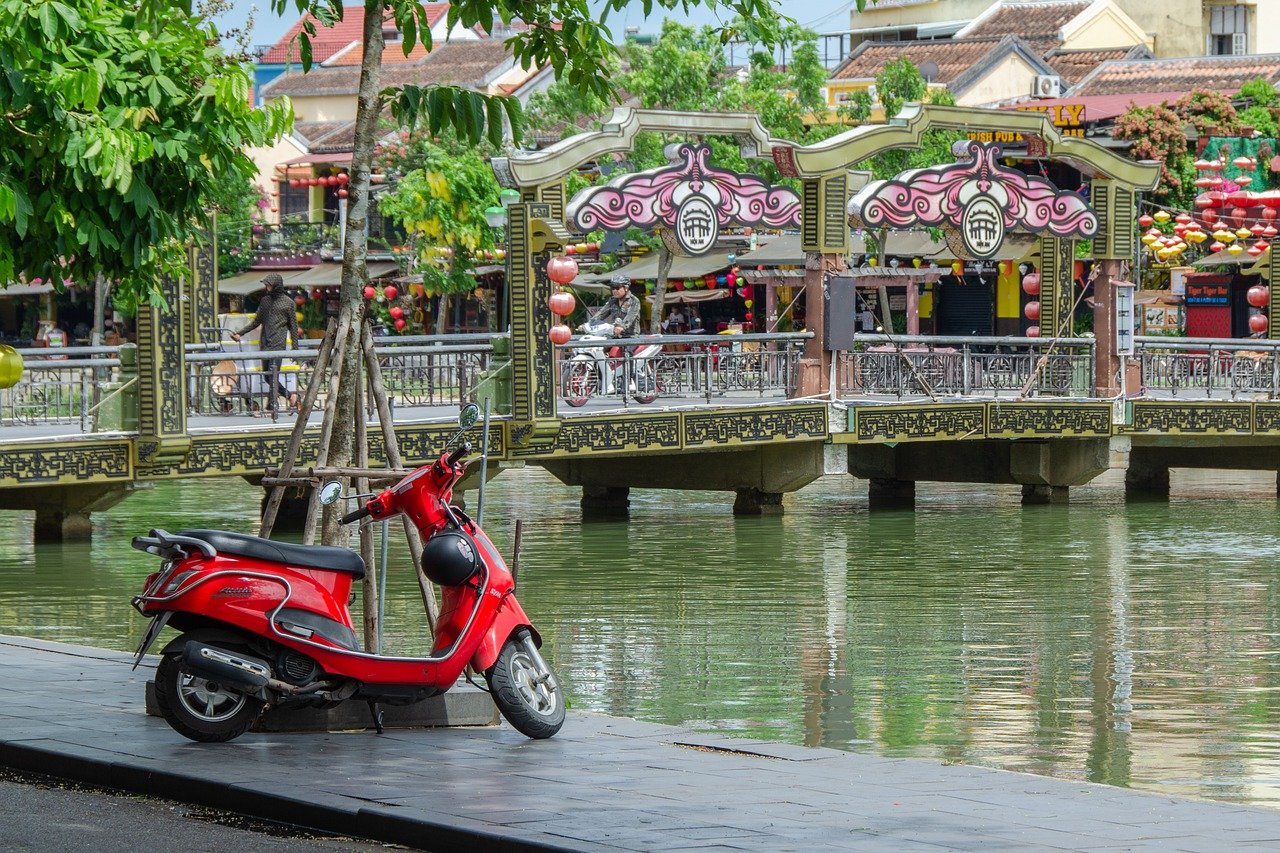If you’re planning to stamp your passport with a visit to Vietnam and Cambodia, it’s essential to pick your travel dates wisely.
Planning Your Dream Vacation with the Best Times for Vietnam and Cambodia
The climate in these wonderful countries is as diverse as the breathtaking landscapes, hence the need to position your timing right for the best experience. Let’s zero in on the specifics.
I. Introduction
They say timing is everything, and when planning the perfect trip to Southeast Asia wonders like Vietnam and Cambodia, truer words have never been spoken.
Dotted with historical landmarks that proclaim the resiliency of its culture, blessed with landscapes promising serenity and scenes right out of a painter’s canvas, these destinations deliver all the ingredients for a memorable trip.
However, the cherry on top? Selecting the optimal time for your visit.
This piece will familiarize you with the best time to visit these blooming nations and provide clever hacks and insights to optimize your travel experience.
So strap up, dear future Southeast Asia explorers, as we navigate through seasons, weather, and cultural events to provide you with this ultimate guide.
II. Understanding the Seasons
A. Vietnam’s climate zones
From the city’s bustling North to the serene South, Vietnam’s geography results in a tri-climatic system:
Northern Vietnam: Home to Hanoi and Sapa’s picturesque landscapes, northern Vietnam experiences four seasons. Expect some cooler months, but who’s complaining when it’s amidst a stunning cascade of yellow and red foliage?
Central Vietnam: Sitting comfortably in the middle, Central Vietnam’s climate is more consistent, earning it the ‘Goldilocks zone’ title. Have you ever wondered what it feels like to experience perpetual spring?
Southern Vietnam: A land of constant summer, Southern Vietnam is a sunshine lover’s paradise but also knows how to throw a good rainfall party.
Vietnam: A Tapestry of Climate Patterns
North Vietnam: Hanoi and Halong Bay
The springtime months of March and April and the autumn cycle extending from September to November are the most inviting. You’re likely to enjoy the mild and lovely weather; just perfect for your exploration.
Central Vietnam: Hue, Hoi An, and Da Nang
The stretch from February to August is usually a jackpot for anyone visiting these parts of Vietnam. Expect warm, inviting sunshine and largely dry conditions.
South Vietnam: Ho Chi Minh City and Mekong Delta
The optimal time for your journey would be to commence it from November to April. During this period, the showers usually take a step back, making it the prime time for a visit.

Choosing the Best Time to Visit Vietnam and Cambodia Adventure
B. Cambodia’s climate overview
Despite being Vietnam’s continental neighbor, Cambodia follows a bi-seasonal pattern:
Dry Season: Between November and April, the Cambodian weather is on its best behavior, making it the ideal time for some temple exploration or peaceful beach lounging.
Wet Season: Between May and October, expect showers and thunderstorms. But don’t fret! The landscapes spring to life in a vibrant green canvas during this time.
Cambodia: A Dance of Dry and Wet Seasons
Dry Season (November to April): If you’re not a fan of rainy days, this period is perfect for you. The skies are clear, and temperatures are bearable. It’s no surprise that this is the peak season for tourism, particularly from November to February, when it gets a tad cooler.
Wet Season (May to October): Yes, there’s a lot more rain during this time. But hold on, don’t write it off just yet! The countryside blooms with vibrant greens and the legendary Angkor temples are more serene with fewer crowds.
In broad strokes, both Vietnam and Cambodia extend their warmest welcome between November and April – generally when the sun has the floor and the rains are on a break. Do keep in mind, though, that the fine print of optimum travel times may differ depending on the particular regions in your itinerary.

Maximizing Your Travel Experience with the Best Time to Visit Vietnam and Cambodia
To navigate this further, I’d recommend checking weather updates and region-specific details as your travel dates get closer.
Travel planning often feels like orchestration – there are so many elements to harmonize! But that’s precisely why it’s an adventure. Safe travels, Globetrotters!
C. How seasonal variations impact travel experiences
For those lusting after sun-baked landscapes and beach-side cocktails, dry and hot periods are your call. But if you find comfort in the pitter-patter of rain and wouldn’t mind a hot piping bowl of Phở away from the tourist rush, the wet season is!
III. Best Time to Visit Vietnam
A. High Season: Pros and Cons
Weather conditions: Our friend, Mr. Sun, takes center stage between February and April and could use SPF support. Dry and warm, it’s the perfect time to flirt with the turquoise waters.
Crowds and tourism peaks: As the saying goes, ‘with great weather comes great crowd influx.’ Expect packed streets and jacked-up prices, but good company is always a bonus, right?
B. Shoulder seasons: Hidden gems
Advantages of visiting during shoulder seasons: Like hidden gems, these transitional periods in Vietnam can be surprisingly refreshing! Plus, you get fewer crowds, lower prices, and Mother Nature’s obsession with color palettes.
Weather considerations: Temperate and transitional weather with occasional rainfall. You might want to pack that light jumper and an umbrella, or you could always buy one from a street vendor – it helps the local economy, too!
C. Low season: Budget-friendly options
Weather challenges: Monsoon is synonymous with the Southeast Asian low season. An umbrella might just become your best friend.
Benefits of traveling during the low season: If you’re that budget-savvy traveler who doesn’t mind trading off sunny skies for some financial flex, the low season offers cheaper accommodation, fewer tourists, and immersive experiences, like borderline therapeutic rainfall sounds!
IV. Best Time to Visit Cambodia
A. Dry season: The peak travel time
Weather highlights: Slightly more relaxed, dry weather, perfect for exploring the awe-inspiring Angkor ruins.
Famous tourist attractions during this season: This is prime time to explore the ancient temples and the glorious beaches of Sihanoukville.
B. Wet season: Experiencing Cambodia off the beaten path
Unique experiences during the rainy season: The wet season in Cambodia means the paddy fields get a vibrant green makeover, making it a mesmerizing sight to behold and a dream for any photography enthusiast.
Challenges and precautions for wet season travel: Pack your waterproof gear; remember, roads may become less navigable. In the spirit of positivity, how about calling this a ‘charming trait of Cambodia’?
V. Special Events and Festivals
A. Highlighting cultural events in Vietnam
Tet Festival: Imagine your classic New Year’s Eve bash with a Vietnamese twist. Brace for the streets to burst with colors, parades, and stellar fireworks displays.
Mid-Autumn Festival: A kaleidoscope of traditional music, lanterns, and, oh, did I mention mooncakes?
B. Cambodia’s traditional festivals
Water Festival: Celebrated in November, this festival is a sight for sore eyes with traditional boat races, fireworks, and perfectly illuminated floats.
Pchum Ben: Also known as ‘Ancestor’s Day’, Pchum Ben lets you delve into Cambodia’s spiritual side with prayers, ceremonies, and delightful feasts.
VI. Activities and Highlights by Season
A. Outdoor activities during the dry season
Trekking and hiking: Hills, terrains, valleys, and maybe a few sunsets? The dry season is ideal for breaking a sweat and climbing breathtaking routes.
Water activities: The beach is calling, and so are the rivers and the lakes.
B. Indoor and cultural experiences during the wet season
Museum visits: Seeking shelter from the rain while expanding your knowledge—what could be better?
Cooking classes and cultural workshops: Add value to your travel story by learning to whip up local dishes and engaging in cultural craftsmanship.
VII. Tips for Travel Planning
Packing tips for different seasons: Layers are a traveler’s best friend. They become particularly significant while packing for countries with diverse climate zones like Vietnam and Cambodia. Also, a rain jacket wouldn’t go amiss no matter the season.
Booking accommodations in advance: Especially during high season, pre-booking can be a blessing that helps avoid skyrocketing prices and fully booked accommodations.
Choosing the suitable tour packages: Be it guided tours around city landmarks or immersive local experience packages, align your booking with your personal preferences and the season of your visit.
VIII. Conclusion
The calendar doesn’t necessarily dictate the best time to visit Vietnam and Cambodia. It’s more about what you want to experience, your traveling style, and how much you love sunshine or rainfall. Regardless of when you choose to visit, these countries’ timeless charm and cultural richness will surely leave permanent bookmarks in your travel diary.
IX. Additional Resources
Local Events Calendars:
Tourist Guides and Apps:
- Download travel apps like TripAdvisor, Google Maps, and local guides to enhance your on-the-go experience. These tools provide recommendations, maps, and reviews.
Embassy Websites:
Language Apps:
- Familiarize yourself with basic Vietnamese and Khmer phrases using language learning apps like Duolingo or Babbel to enhance your communication with locals.
Travel Insurance Providers:
- Ensure a worry-free trip by researching and selecting a reliable travel insurance provider. Compare policies to find one that suits your needs and offers coverage in both Vietnam and Cambodia.
Remember, folks, that the essence of travel extends beyond mere destination-hopping; it encompasses immersing yourself in new cultures and crafting unforgettable memories. Therefore, as you chart your journey, consider the narrative you wish your travel experiences to weave. Happy planning!

